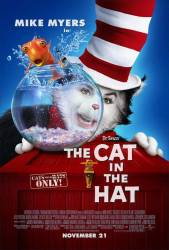Other mistake: When the Cat is using the periscope to look at Nevins, the range on it reads between forty-nine point two meters, and fifty-two point four meters. These distances translate into just over one hundred sixty-one, and one hundred seventy-one feet respectively. The kids and the Cat were no more than about fifty to sixty feet at best away from Nevins.
Suggested correction: Its more plausible the device isn't calibrated properly, after all it's not like they're going to lob something that requires pin point accuracy such as a bomb for example. That and the fact the cat is keen to make a huge mess at every opportunity suggests he probably made a mess of calibrating the periscope too.





